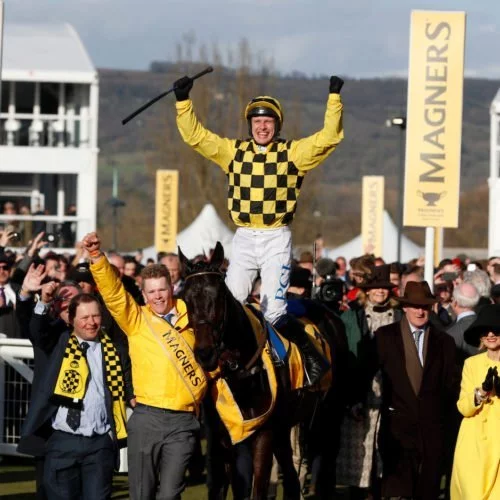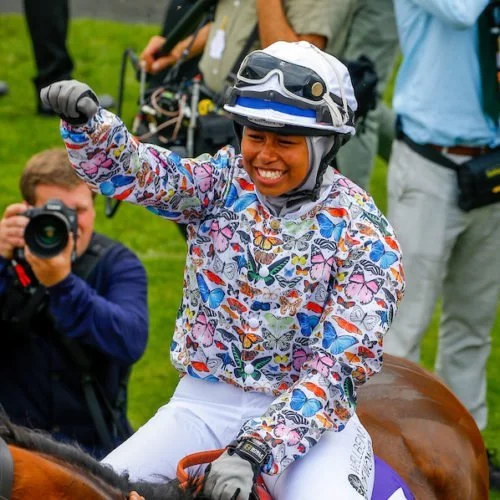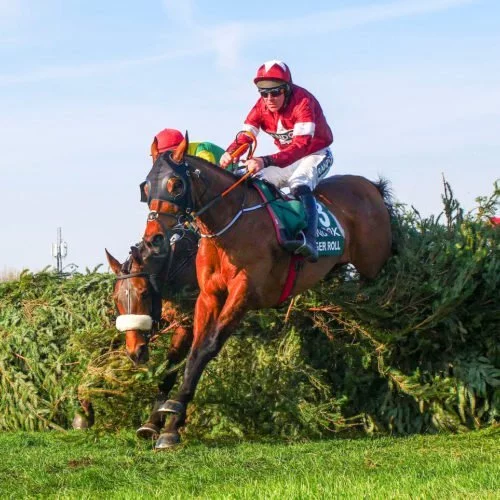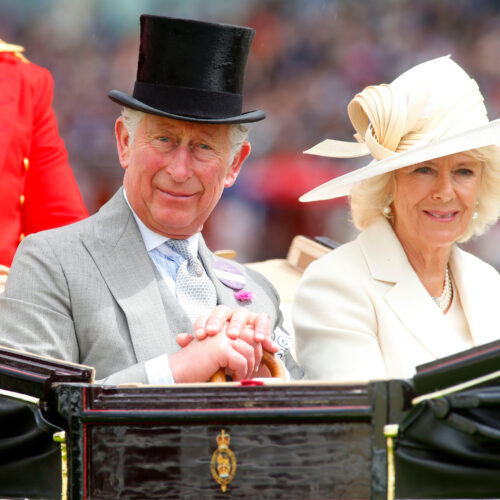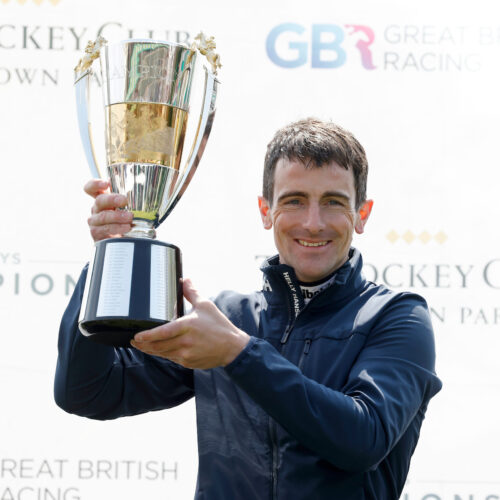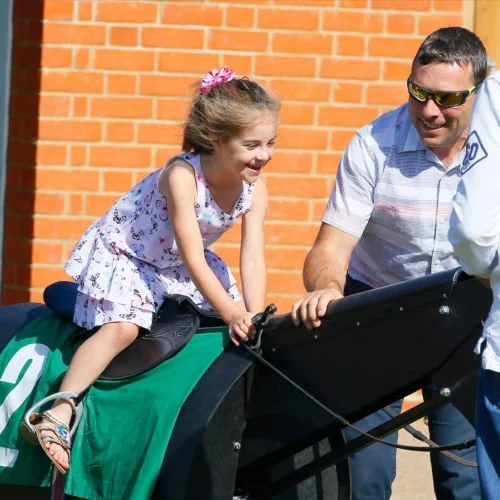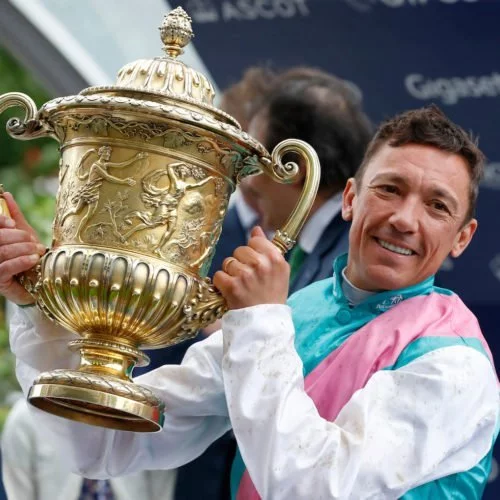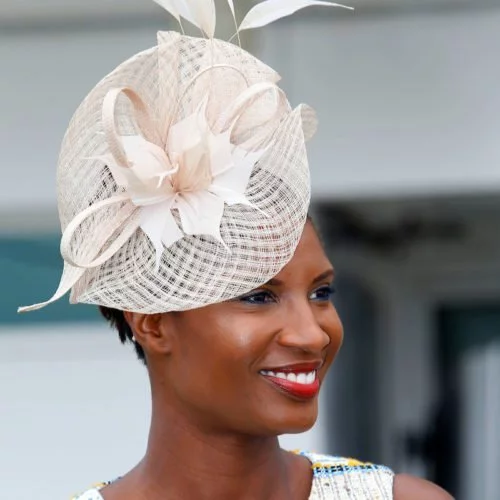Beautiful Surroundings
With its woodland backdrop and traditional drystone walls lining the road side, it’s as if the venue had jumped off the page of a Beatrix Potter book. The quaint course – one of the smallest jumps tracks in the country – lies in the very south of the Lake District.
It’s just the other side of Lake Windermere from the cottage where the celebrated author and illustrator created children’s favourites Peter Rabbit, Squirrel Nutkin and Mrs Tiggy‐Winkle. The Cumbrian track is one of the most picturesque courses on the jump racing circuit and it attracts huge crowds to its nine race days.
The season kicks off in late May and runs until August Bank Holiday Monday. The opening meeting is held over three days but there’s a rest day in between each afternoon’s racing to allow visitors to enjoy everything the rest of the Lake District has to offer.
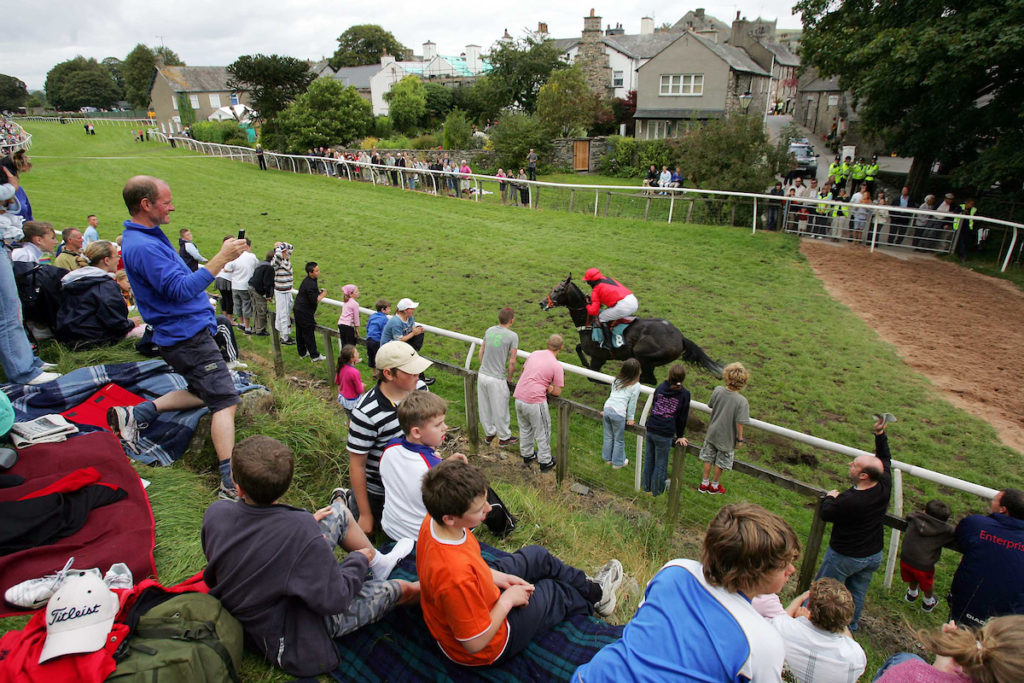
Sweet As You Like
The village of Cartmel is popular with tourists and the local shop plays an important role in the prizes handed out to the winning connections of every race making victory even sweeter. The lucky owner gets to take home one of the world‐famous sticky toffee puddings from Cartmel Village Shop.
The sweet treats, originally made in the shop’s kitchen, sell all over the globe and they provide a special bonus to any connections fortunate enough to enjoy a winner at the track.
The left‐handed course, despite having one of the smallest circuits in British jump racing, has the longest run‐in from the last fence to the winning line. The home straight is along a chute that dissects the middle of the course, where, unusually, all the stands, racecourse buildings and viewing areas are located.
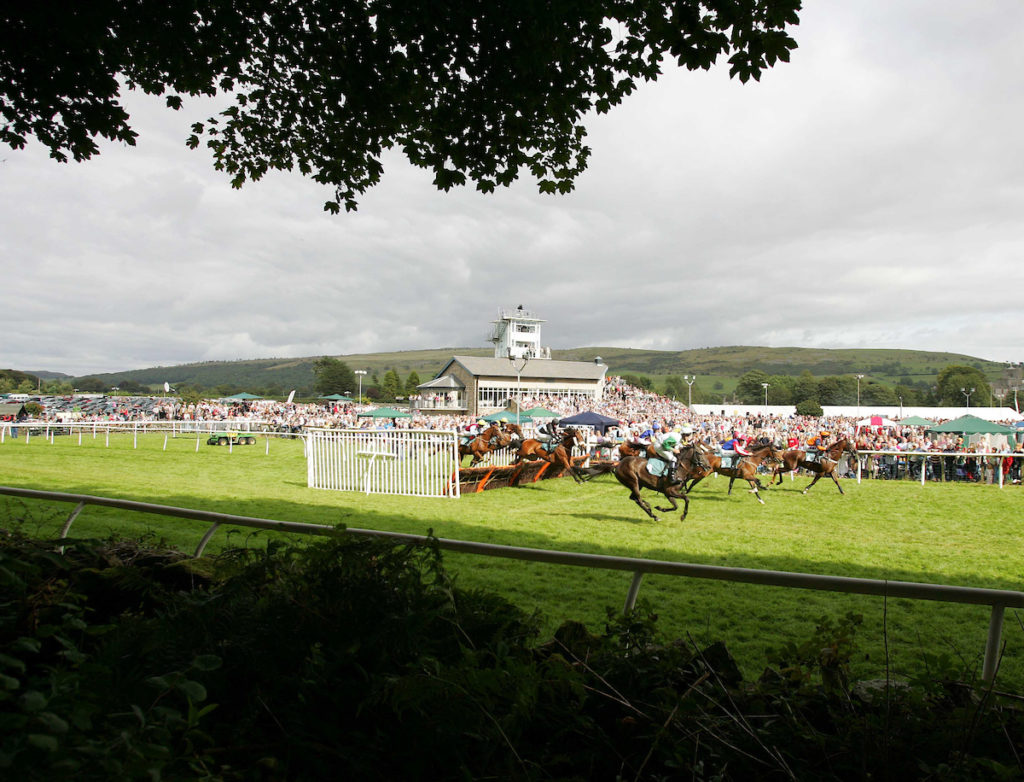
History, A Betting Plot and James Bond
Racing in Cartmel dates back as far as the 15th Century when monks from the local priory used to race mules. The earliest written account of racing at Cartmel dates back to 1856. The early meetings were run on the Flat and it wasn’t until the turn of the century that it became a jumps‐only course.
The course closed during World War II and it might not have come back at all if it wasn’t for the efforts of local landowners. One of the driving forces to reopen the track was George Dickinson, grandfather of Michael Dickinson, who trained the first five horses home in the 1983 Cheltenham Gold Cup.
Cartmel was also the setting for one of the most famous betting coups. It centred on a horse called Gay Future, who was entered to run at the track on August Bank Holiday Monday in 1974. The track was chosen because it only had one phone line meaning it was easier to stop off‐course bookmakers from hedging the bets with the bookies on the course to shorten the starting price. The plot was rumbled and bookmakers refused to pay out after Gay Future had won easily.
The ringleaders ended up in court and the affair went into racing folklore with a film, Murphy’s Stroke starring future James Bond Pierce Brosnan, made about the audacious plot
More From Great British Racing
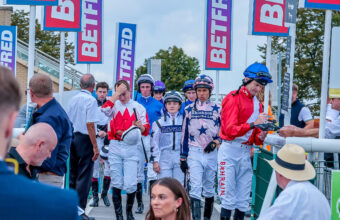
The Race is Off – Who Will Become the 2025 Champion Flat Jockey?
The race to be Champion Flat Jockey kicked off at Newmarket’s Guineas Festival. The country’s top riders will battle it out for the prestigious title over the next five-and-a-half months. Rossa Ryan...
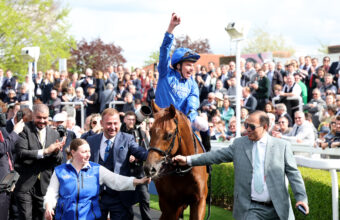
What’s On In May?
The opening weekend of the month plays host to Newmarket’s Guineas Festival and then we’re straight into the crucial Derby Trials. Here’s a look at all the Premier Racedays in May. Newmarket...
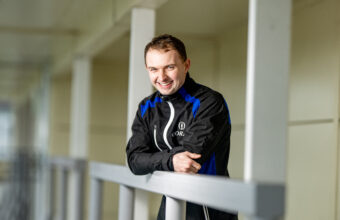
From the Canvas to the Championship – Sean Bowen
Bygones are Banished He finished just seven winners behind Harry Cobden 12 months ago despite spending six weeks on the sidelines following a fall in the Grade 1 Formby Novices’ Hurdle at...
